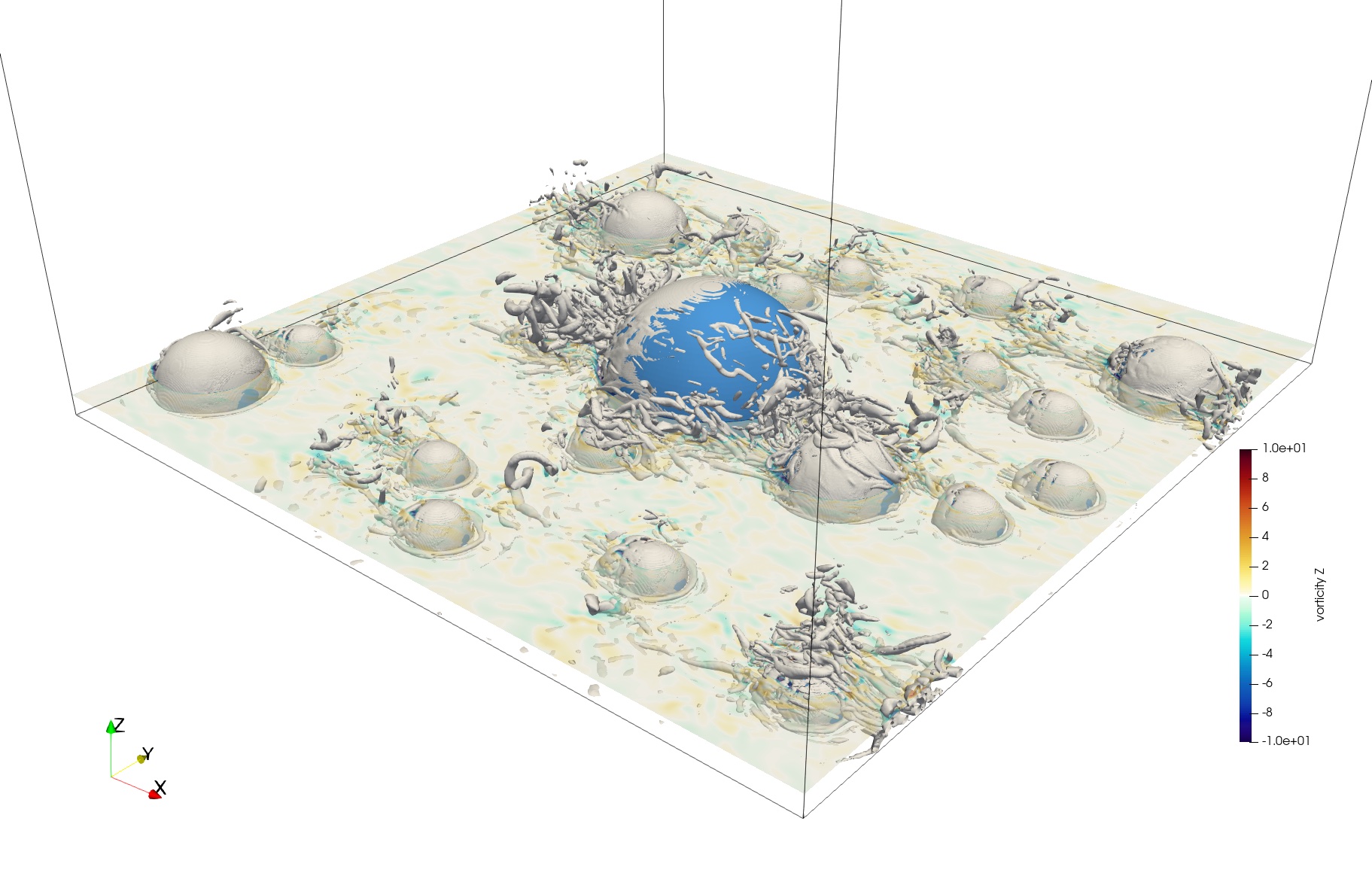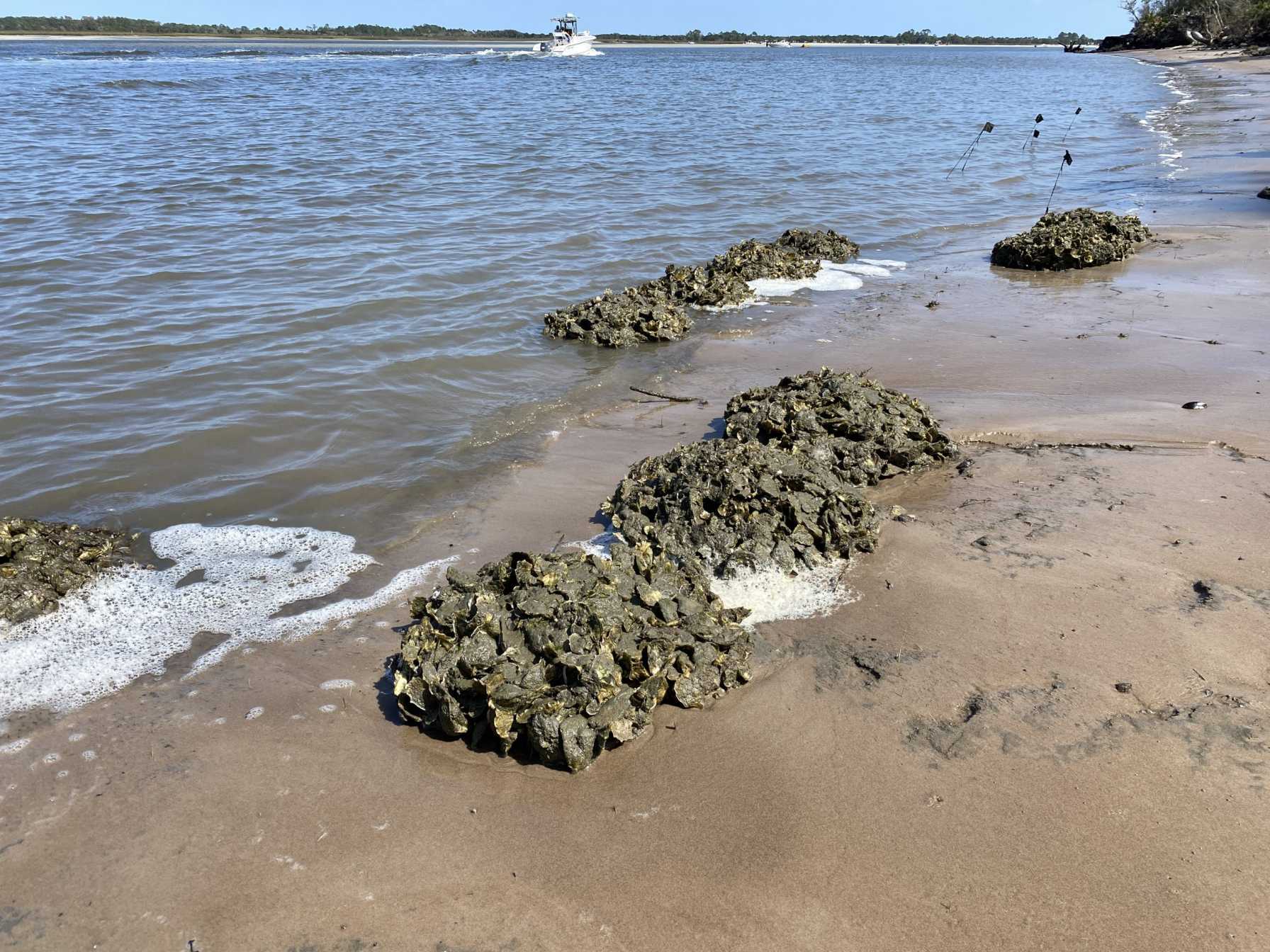Coral and oyster reefs play a vital role in mitigating the impact of wave energy on coastal areas as water flows through and past the contours and irregularities of their surfaces. Xiao Yu, Ph.D., assistant professor in the Department of Civil and Coastal Engineering, and Ph.D. student Lauren Cope are developing models to measure how much these complex surfaces on coral and oyster reefs weaken wave impact on shorelines.
“One of the things that’s really challenging to understand is how much energy dissipation the coral reef can provide, and it’s due to the rough surface from the topography,” said Yu. “The bottom topography can attenuate the incoming flow of energy. With this numerical model, we can directly calculate the force on the coral reef surface.”

Yu uses the analogy of walking with an umbrella during strong winds. When the umbrella faces the wind, a person feels a stronger force of the moving wind dragging on the umbrella compared to when the umbrella is angled upright. Similarly, currents and waves drag across the rough surface of coral reefs, which slows them down as they reach the coast.
While understanding of interactions between topography and fluid flow is well-established in terrestrial ecosystems, such as measuring the wind passing over a forest or a river flowing across gravel, coastal ocean settings pose unique challenges. Surface waves add a layer of complexity that has not been well studied, as waves affect the flow of water differently than steady currents. Current ocean models are often based on a single length scale, which does not consider how a variety of length scales in landscapes such as coral reefs may affect wave dissipation.
Yu’s model addresses this gap by incorporating both wave-driven currents and wave dissipation at multiple scales, from centimeters to meters. Yu and his team use a model called large-eddy simulation, which resolves turbulent flows in the ocean. The team is also the first to adopt the double-averaging approach to waves and conduct analysis based on the model’s results, achieving a finer level of detail than previous studies in coral reefs.

“We are trying to understand how multiple scales of the topography interact with each other and how different scales act together in multiscale topography to determine the energy dissipation,” said Yu.
In her previous work at the University of North Florida, Lauren Cope focused on modeling various arrangements of artificial oyster reefs to analyze erosion and accretion patterns, which informs the strategic placement of recycled oyster shells to mitigate wave impact.

“We found having them arranged in a chevron shape was good for sites where you might have waves coming at an angle,” said Cope. “At the sites where we were working, we had a lot of boat wakes, and they would generate waves at an angle.”
Yu and Cope’s findings extend to predicting storm surges and supporting communities to prepare for these events, as well as designing artificial reefs that optimize protection of coastal communities.
—
By Megan Sam
